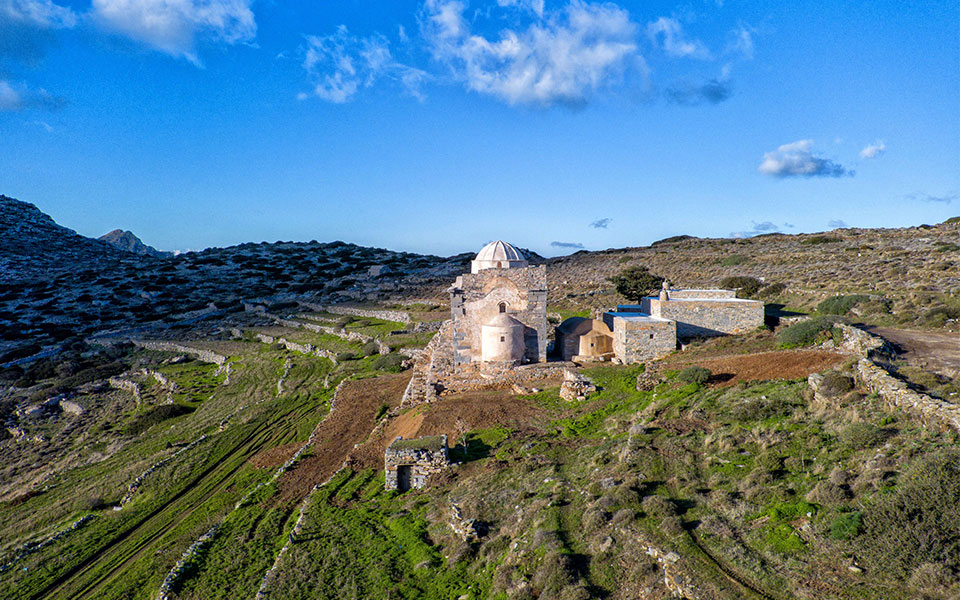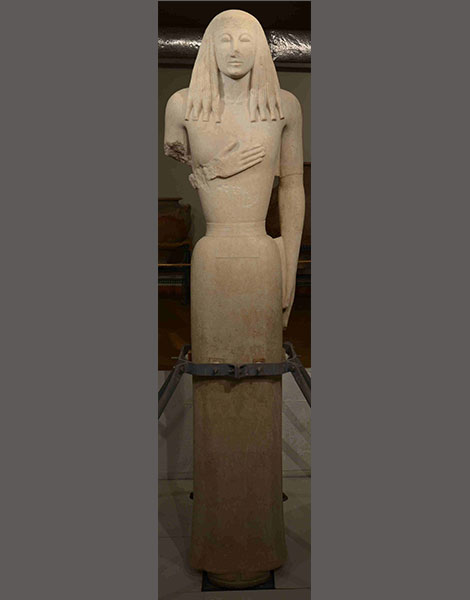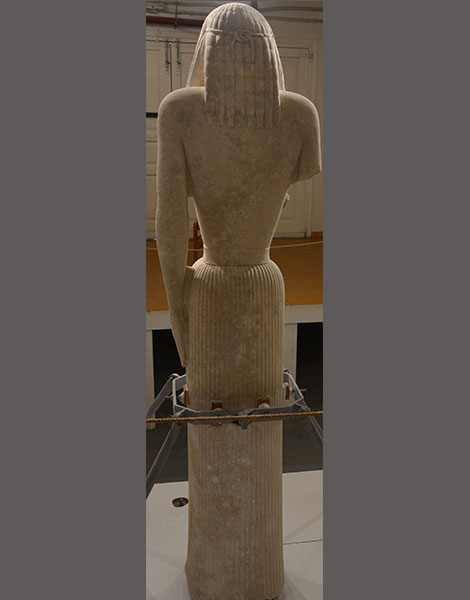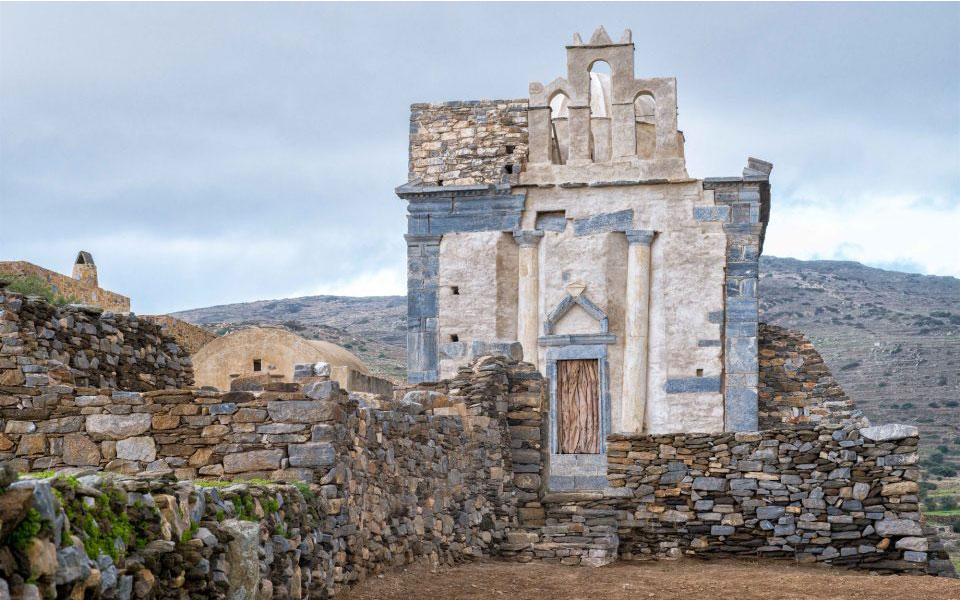Upon entering the imposing Church of Episkopi, visitors will often find their gaze drawn to the 17th -century iconostasis carved out of wood. However, what is undoubtedly of greater interest can be found in a display case to the right side of the entrance. The case holds the treasures of Neikos, the noblewoman whose story was commemorated 18 centuries ago by the creation of this monument, and whose remains are still hidden within its walls, sealed away from the eyes of both gods and humans.
Among the finds on display are pieces of tar and brimstone, which in antiquity were placed on women’s breasts as a sign of “deviant burial.” Archaeologists maintain that these are the hallmarks of ancient superstitions fueled in part by necrophobia.
“Neikos, the Virgin Mary and St. Theodore Stratelates coexist harmoniously with Roman meanders in this cultural monument,” noted the Head of Ephorate of Antiquities of Cyclades, Dimitrios Athanasoulis, during the ceremony conducted by the Hellenic Ministry of Culture on Saturday, September 3rd.

“This monument has been restored in the best possible way, the way that the Greek Archaeological Service knows how to perform restorations, and this effort has contributed significantly to the major engineering projects reshaping this country’s image,” concluded Lina Mendoni, Director of the Hellenic Ministry of Culture and Sports.
On the night of the ceremony marking the monument’s European Cultural Heritage Europa Nostra award, an event attended by Katerina Sakellaropoulou, the President of Greece, the Church of Episkopi was illuminated by a special 3D video projection that charted its passage through the ages, including its transition from a Roman-era mausoleum to a Byzantine-era Christian church .
The whole of the project, with its budget of a million euros, was financed by the European Regional Development Fund and South Aegean Region. The finalization of the project was a team effort involving the Municipality of Sikinos, the Society for the Environment and Cultural Heritage, and the local community, which had seen its church cease operations 50 years ago and which had since then actively sought its restoration.
The Church of Episkopi has been deemed an archaeological monument open to the public; it will operate as a house of worship on the 15th of August every year, holding religious services in honor of the Assumption of the Virgin Mary.

© Hellenic Ministry of Culture and Sports

© Hellenic Ministry of Culture and Sports
The Kore of Thera
In Santorini, the ancient sculpture known as the Kore of Thera, and which stands 2.48 meters tall, has been unveiled to the public. This impressive sculpture, made of white Naxos marble, was discovered in 2000 by the Santorini-born archaeologist Charalampos Sigalas.
The cultural importance of this occasion became apparent when the President of Greece, Katerina Sakellaropoulou, changed her plans to return directly to Athens from Sikinos and instead arrived on Santorini to attend the unveiling.
“In difficult times, we can always count on our country’s assets, which are our Aegean, the Cyclades, and our culture, for they hold a great power to soothe the anguish in our souls,” Sakellaropoulou stated in a speech made during her visit.
This article was previously published in Greek at kathimerini.gr.












